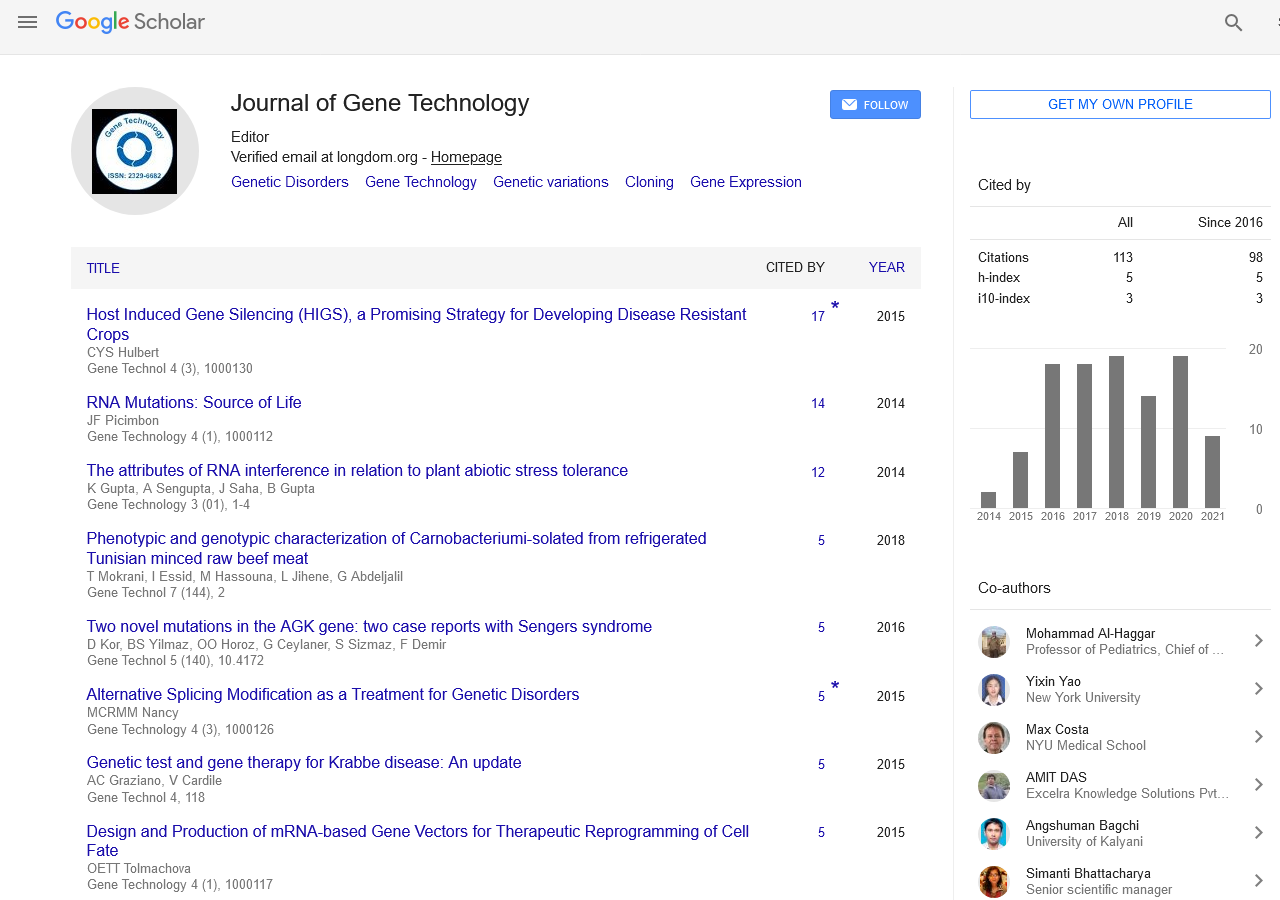PMC/PubMed Indexed Articles
Indexed In
- Academic Keys
- ResearchBible
- CiteFactor
- Access to Global Online Research in Agriculture (AGORA)
- RefSeek
- Hamdard University
- EBSCO A-Z
- OCLC- WorldCat
- Publons
- Euro Pub
- Google Scholar
Useful Links
Share This Page
Journal Flyer

Open Access Journals
- Agri and Aquaculture
- Biochemistry
- Bioinformatics & Systems Biology
- Business & Management
- Chemistry
- Clinical Sciences
- Engineering
- Food & Nutrition
- General Science
- Genetics & Molecular Biology
- Immunology & Microbiology
- Medical Sciences
- Neuroscience & Psychology
- Nursing & Health Care
- Pharmaceutical Sciences
Abstract
RNA Mutations: Source of Life
In a recent study published in PLoS ONE, our group showed that the genes coding for the chemosensory proteins in silkworm moth Bombyx mori were subjected to RNA editing. This post-transcriptional process, described from bacteria to complex organisms as plants and humans, by changing nucleotide sequence enables to increase a repertoire of proteins from a single RNA. After a short introduction in which I remind the dogma initially established with the discovery of the double helix of DNA where a single gene encodes for a single protein, I present processes, RNA editing and alternative splicing, as two complementary modes for generating different proteins with different functions and regulation. Then, using intronless genes as example, I stress the role of RNA editing over alternative splicing. In the second part of the commentary, I discuss about RNA editing and alternative splicing in the course of evolution and I provide arguments supporting RNA editing as an early mechanism on earth that could have generated various proteins from few RNA. RNA mutations are proposed to be fuel for evolution of pheromone systems and even perhaps the mechanism that brought the original dormant RNA molecule to life. I propose RNA editing contributes source of life in an original RNA world. In the last part, I raise questions for new biotechnological prospects about cell molecular biology, RNA editing, genetic mutation, pathology, therapy, cloning and transgenesis.


